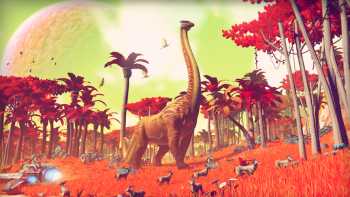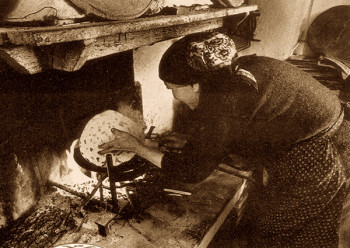New Year’s Sky
January 4, 2016
“Nothing exists until or unless it is observed. An artist is making something exist by observing it. And his hope for other people is that they will also make it exist by observing it. I call it ‘creative observation’.”
~ William Burroughs

There is a lovely bit of poetry by Indian philosopher Sri Aurobindo that profoundly touched me from the moment I first read it:
“What, you ask, was the beginning of it all? And it is this… Existence that multiplied itself for sheer delight of being and plunged into numberless trillions of forms so that it might find itself, innumerably.”
What an elegant, romantic origins story of the Universe! The idea that God, wishing to observe itself, wishing to admire itself, wishing to experience love, exploded from a singularity into a multiplicity, thereby manifesting itself into the Universe we know. This would mean that each one of us, as participants of this Universe, are both observers and the observed. We are all parts of God, experiencing itself.
Even if this idea resonates with you, we individuals, as merely parts of the whole, can never truly know for certain how the Universe actually came into being. But with the coming launch of the much anticipated game No Man’s Sky, there will soon be an opportunity to explore and experience a universe whose origin is documented and whose creators are known and giving interviews about their creation on talk shows.
No Man’s Sky (set to launch in June of 2016) is a video game world which is generated by the observer. Created by 10 designers using mathematical formulas, it is an explorable universe containing over 18 quintillion planets, every one of them with its own atmosphere and unique plant and animal life. Each player is on an explorer’s adventure of discovery, able to name places and creatures and collect natural resources. These galaxies, solar systems and planets are mathematically generated as individual players explore them. However, the universe of No Man’s Sky is so vast, its players may never come into contact with one another within it.
The creator of No Man’s Sky, Sean Murray, recently demonstrated the game on The Late Show with Stephen Colbert, commenting that our own sun and solar system would be long dead before all of the planets within No Man’s Sky could possibly be explored. So, in theory, this mathematically created universe and its inhabitants will still exist when the universe of its creators is long gone. With no knowledge of how they came into being, I wonder how accurate their own theories about the creation of the world in which they live will be.
Here is the YouTube of the interview with a demo of No Man’s Sky. It is fascinating. I’m not a gamer, but this looks like it would be an infinite universe full of fun to play:
To check out the game further, you can visit the No Man’s Sky website.
~~~~~~~~~
Several hundred years ago, explorers thought our world was flat. This Homemade Italian Flatbread is a world of delicious that is worth discovering.

Piadina – Homemade Italian Flatbread
Piadina is the name for a popular flatbread in Italy. It’s easy to make at home and requires no yeast. There are many versions of the recipe, depending on the region and preference of each cook. Piadina is traditionally made with lard, which I’m not a fan of. This is my personal version of the recipe, made with butter. You can substitute olive oil, if you wish.
3 & 1/2 cups all-purpose flour (plus some for rolling out)
1/2 teaspoon salt
1 egg
5 tablespoons butter, softened
2/3 cup milk
1/3 cup warm water
1/4 teaspoon baking soda
Optional:
Additional warm water
Extra virgin olive oil
In a large bowl, add flour and make a well in the center. Add salt, egg and butter and mix with a fork until crumbly. Make a well in the center again and mix in the milk, warm water and baking soda.
Knead with your hands until soft and smooth, but not sticky (if too sticky, add a bit of flour; if not soft enough, add a small amount of olive oil and/or warm water). Continue kneading for 10 minutes total.
Make a ball with the dough, wrap it in plastic wrap and let it rest at room temperature for 30 minutes to 1 hour (you can also refrigerate it at this point and let it come to room temperature for one hour before rolling it out).
Make the large ball into six smaller balls. On a clean, lightly-floured surface, using a lightly-floured rolling pin, roll each of them out into large, thin circles. Put plastic between each as you make them, to keep them from drying out.
Heat a large griddle pan or skillet over medium-high heat. Prick the piadina all over the surface with a fork. Cook 2 to 3 minutes or until brown spots appear all over the bottom. Flip over and cook the other side.
Serve warm (I reheated them the next day with great results).
You can cut into triangular pieces and use to scoop up dips or dunk into soup. You can use as a base for a quick pizza. You can also top or stuff them with various fillings. Here are some suggestions:
Grated mozzarella, mortadella, saffron mayonnaise
Bacon, arugula, burrata cheese, balsamic glaze
Scrambled eggs, cheddar cheese, chives
Sautéed mushrooms, soft goat cheese, thyme
Roast chicken or turkey, pesto mayonnaise, Parmesan cheese
Peanut, almond or sunflower butter, banana slices, grated chocolate
Makes 6 piadina
January 4th, 2016 at 9:22 pm
Creating a new universe in the new year is one way to do it… wow!
January 5th, 2016 at 9:50 am
I enjoyed reading this